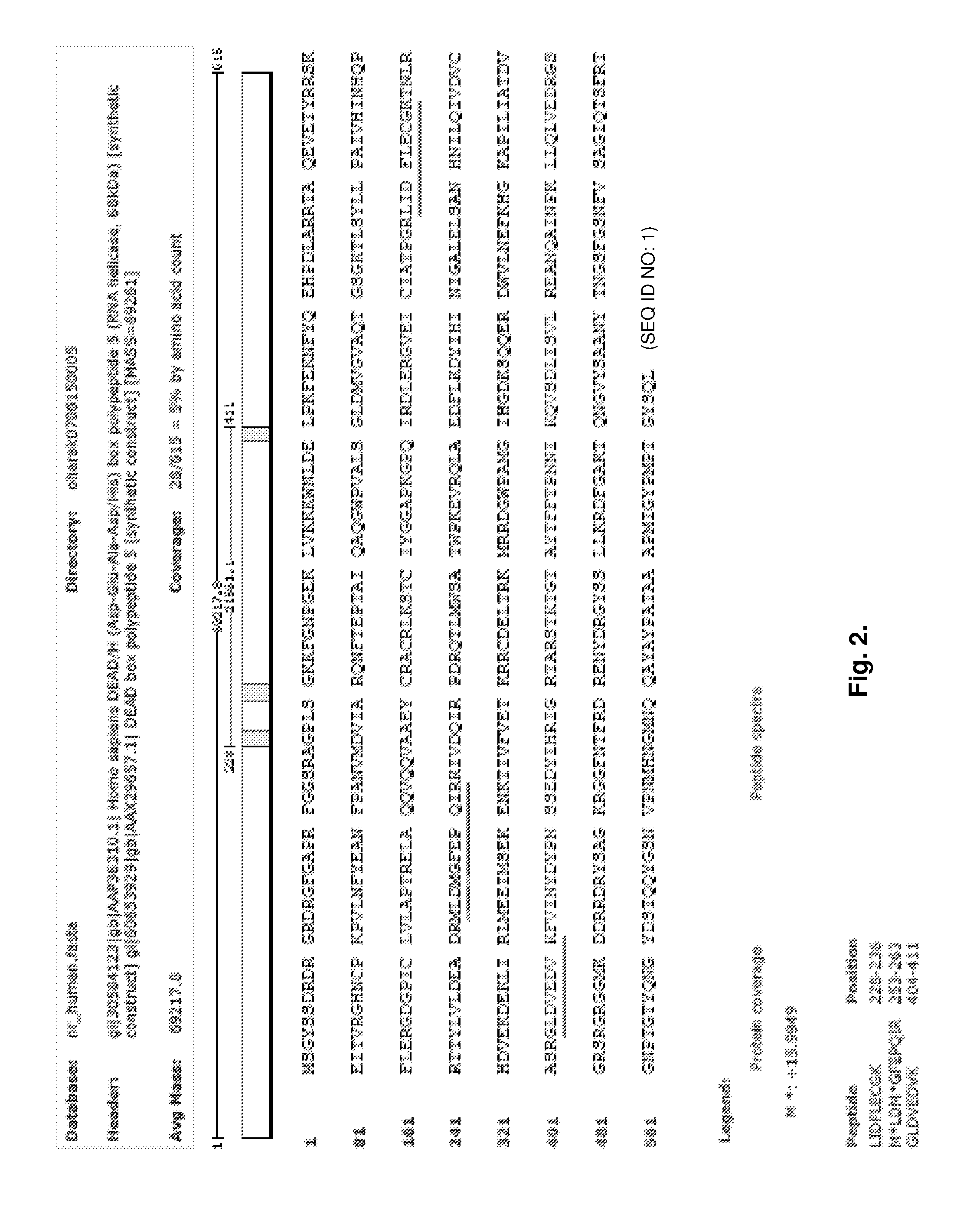Antibacterial compositions
a technology of compositions and antibacterial agents, applied in the field of oral antibacterial compositions, can solve problems such as difficult prevention or treatment, and achieve the effects of significant inhibitory activity, potent antibacterial activity, and significant antiviral inhibitory activity
- Summary
- Abstract
- Description
- Claims
- Application Information
AI Technical Summary
Benefits of technology
Problems solved by technology
Method used
Image
Examples
example 1
Induction of LL-37 Peptides
Induction of LL-37 and hBD2 mRNA Expression in Human Gingival Epithelial Cells
[0187]Both LL-37 and hBD2 mRNA expression in OBA9 cells are induced after a 4-hour exposure to green tea polyphenol extract, Teaflan 90S (EGCG 50%, ECG 13%), and purified EGCG (95% pure, SIGMA) at concentrations of 0.1, 1.0 and 10 ug / ml. EGCG increases the production of LL-37 and hBD2 at the mRNA level in the human gingival epithelial cell line OBA9 (FIG. 1) as well as the human lung carcinoma cell line A549.
In Vitro Induction of LL-37 Protein Expression in Human Gingival Epithelial Cells.
[0188]Using ELISA systems to detect LL-37 (Forsyth in-house) and hBD2 (Peprotech), 33 natural compounds (20 ug / ml) are examined for their ability to induce LL-37 and hBD2 from OBA9 cells. Although the sensitivity of the hBD2 ELISA is higher than that of LL-37 ELISA (10 pg / ml vs 1 ng / ml, respectively), the induction of LL-37 is more prominent than hBD2 (FIG. 2 A&B, LL-37; C&D, hBD2). Trihydroxybe...
example 2
Binding to DDX5
[0193]In order to confirm if LL-37 induction in epithelial cells by EGCG is dependent on the activation of cell ligand (either cytoplasm or cell surface), or previously known anti-oxidant effects by EGCG, 3,4,5-tri-hydroxy benzoic acid-coupled beads and control 2,6-di-hydroxy benzoic acid-coupled beads are utilized to pull down the possible ligand for 3,4,5-tri-hydroxy benzoic acid. After incubation of each bead with cell lysate of OBA9, the beads are washed, and the cellular materials that bind to the beads are separated in SDS-PAGE. At least 3 bands (MW 35 kD, 70 kD and 90 kD), which are distinct to 3,4,5-tri-hydroxy benzoic acid, are detected, as compared to the other beads (control, 2,6-di-hydroxy benzoic acid and control plain beads). The 3 bands (35 kD, 70 kD and 90 kD) are cut out from SDS-PAGE gel and submitted for Mass-Spectrometry analysis service at Tufts University Core Facility. While the 35 kD and 90 kD bands do not contain any distinct protein to 3,4,5-...
example 3
Formulations
[0196]In one embodiment, the composition of the invention may be prepared using the following ingredients:
[0197]
TABLE 1MATERIALWEIGHT %Polyphenol extract-10.200Trihydroxybenzoate derivatives0.050Carboxymethyl cellulose1.100Sodium Saccharin0.200Sodium Monofluorophosphate1.100Tetrasodium pyrophosphate0.500Phosphoric acid 85%0.600Dicalcium phosphate dihydrate46.500Sodium lauryl sulfate 35%4.071Flavor0.950Glycerin22.000Deionized WaterBalanceTOTAL100.000
wherein polyphenol extract-1 comprises between 0.06-0.6% gallic acid.
[0198]In another embodiment, the composition of the invention may be prepared using the following ingredients:
[0199]
TABLE 1MATERIALWEIGHT %Polyphenol extract-20.200Trihydroxybenzoate derivatives0.050Carboxymethyl cellulose1.100Sodium Saccharin0.200Sodium Monofluorophosphate1.100Tetrasodium pyrophosphate0.500Phosphoric acid 85%0.600Dicalcium phosphate dihydrate46.500Sodium lauryl sulfate 35%4.071Flavor0.950Glycerin22.000Deionized WaterBalanceTOTAL100.000
wherei...
PUM
| Property | Measurement | Unit |
|---|---|---|
| concentration | aaaaa | aaaaa |
| mean particle size | aaaaa | aaaaa |
| average particle size | aaaaa | aaaaa |
Abstract
Description
Claims
Application Information
 Login to view more
Login to view more - R&D Engineer
- R&D Manager
- IP Professional
- Industry Leading Data Capabilities
- Powerful AI technology
- Patent DNA Extraction
Browse by: Latest US Patents, China's latest patents, Technical Efficacy Thesaurus, Application Domain, Technology Topic.
© 2024 PatSnap. All rights reserved.Legal|Privacy policy|Modern Slavery Act Transparency Statement|Sitemap



